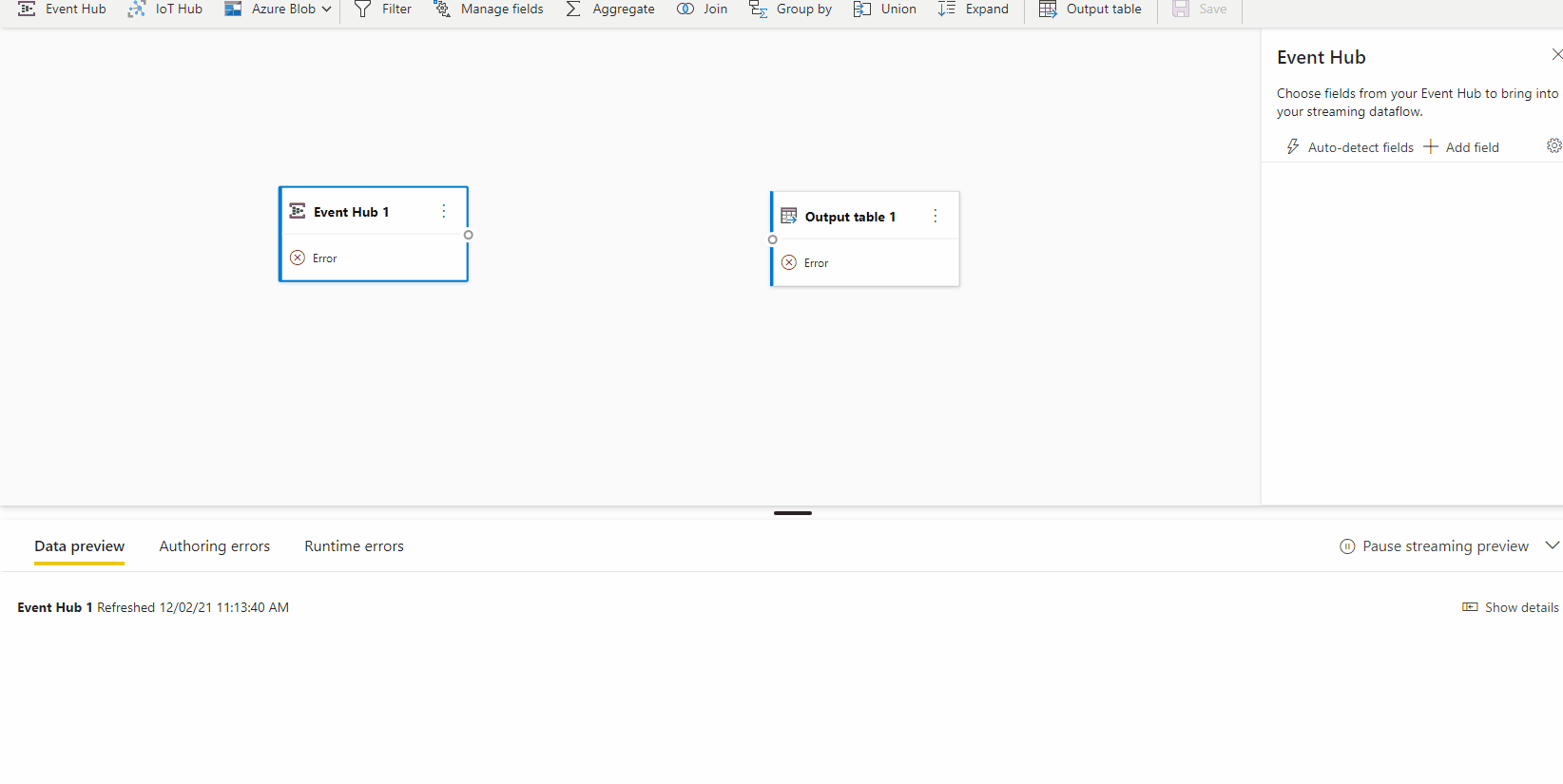Power BI Streaming Dataflows November Update
We are excited to announce new capabilities for Streaming Dataflows in Power BI.
As a reminder, streaming dataflows allow authors to connect to, ingest, mashup, model, and build reports but based on continuous streaming, near real-time data. This is done directly in the Power BI service with beautiful, drag and drop, no-code experiences.

In this month’s update, we are announcing a major new addition.
Array Support
Previously Streaming Dataflows only supported simple and nested objects. However, Streaming Dataflows now supports objects that have an array inside it, including accessing array elements from array-based inputs. This can be particularly useful for scenarios involving batched data – such as temperature changes in a narrow window of time at oil rigs / pipelines.
An example of this can be seen below where an EventHub source is set up. The data source contains an array and is identified as such by the ‘Auto-Detect’ fields feature. This must then be unrolled through the ‘Expand’ function in the Streaming Dataflows editor and then stored in the output table.

Start your streaming dataflow journey today
To start your streaming dataflow, head to the workspace and hover over your streaming dataflow’s name. You will see a “play” icon. Click it and your dataflow will start. Read our documentation to learn more.




